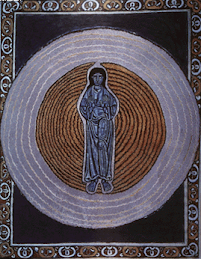Astronomers and astrophysicists have given us insight into what happened in the first trillionths-of-a-second after the Big Bang, nearly 14 billion years ago. But the current cosmological hypothesis is that before the Big Bang there was nothing.
Now Roger Penrose, the eminent British mathematician, is arguing that there is physical evidence that may predate the Big Bang. In a recent paper, he and his co-author, the physicist V. G. Gurzadyan, describe a pattern of concentric circles detected against the universal backdrop of cosmic microwave radiation generated by the Big Bang. These circles, they say, may be gravitational waves generated by collisions of superbig black holes before the Big Bang.
The two scientists go even further, claiming that the evidence also suggests that our universe may “be but one aeon in a (perhaps unending) succession of such aeons.” What we think of as our “universe” may simply be one link in a chain of universes, each beginning with a big bang and ending in a way that sends detectable gravitational waves into the next universe.
The argument is highly controversial. But if the circles the two scientists have detected stand up to further examination — if they’re not the result of noise or instrumental error — it could radically change the way we think about our universe. And the notion is no more radical than that of some cosmologists who argue that our universe is only one in a multiverse — a possibly infinite number of co-existing, but undetectable, universes.
The question is: What do we do with these possibilities? Our answer is to marvel at them and be reminded, once again, that we live in a universe — however we define it — that contains more wonders than we can begin to imagine.
I played with this idea a bit in my second post on this blog: An Effervescent God? It gives new meaning to "He counts the number of the stars and calls them each by their names. Great is our LORD and mighty in power; there is no limit to his wisdom." (Psalm 147:4-5)





No comments:
Post a Comment